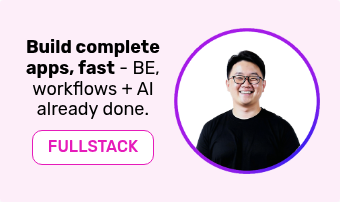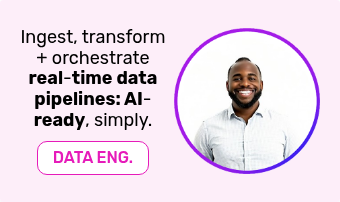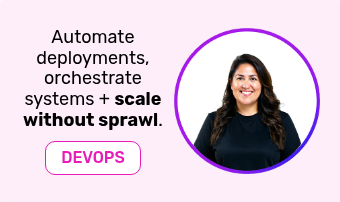What is Data Orchestration?
Data Orchestration enables you to streamline your data pipelines with automation and add intelligence, improving business-wide performance + making your job simpler.

In the world of modern data architecture, data orchestration has become an essential concept for IT teams and developers.
As organisations generate and utilise increasingly large amounts of data, ensuring that data flows efficiently between systems, applications + teams is critical. Data orchestration provides the framework for achieving seamless, automated, and intelligent data management across your infrastructure.
Article by:
Paul Berkovic, Cofounder
Contact

What's covered below?
- The Definition of Data Orchestration + Why it Matters
- Key Components of Data Orchestration
- The Benefits of Data Orchestration
- Common Use Cases for Data Orchestration
- What are Common Tools + Technologies for Data Orchestration?
- Challenges in Data Orchestration
- Future Trends in Data Orchestration
- FAQs: Data Orchestration for Developers and IT Teams
At its core, data orchestration refers to the automated coordination and management of data as it moves through an organisation’s systems.
This involves connecting disparate data sources, transforming the data as needed, and delivering it to the appropriate destinations - all in a streamlined and efficient manner. Data orchestration ensures that the right data is available in the right format and at the right time, but also to the right systems and users.
As organisations adopt hybrid + multi-cloud environments, data orchestration becomes a cornerstone for success. Traditional methods of managing data pipelines often involve manual processes and siloed systems, leading to inefficiencies, delays + errors.
Data orchestration resolves common business challenges, including:
Data orchestration enables you to utilise automation to reduce manual intervention in data workflows. This streamlines operations, minimises human errors + ensures that data moves seamlessly through systems without delays.
Automation enables faster processing times and consistent adherence to predefined rules, reducing the risk of bottlenecks + improving overall efficiency in handling data pipelines.
Data orchestration enables you to connect a diverse range of data sources and systems.
Connecting diverse data sources and systems to create seamless data workflows that enable unified data visibility. This includes integrating structured, semi-structured + unstructured data from APIs, on-premises databases, cloud storage + IoT devices; ensuring consistency across all systems.
Data orchestration enables you to develop the framework you need to support data environments.
Supporting the growing complexity of data environments by dynamically adjusting to increased data volumes and processing demands. Scalable data orchestration frameworks can handle millions of events per second, ensuring high performance for modern, data-intensive applications.
The control that data orchestration delivers enables you to ensure compliance and security in data flows by implementing robust policies, access controls + audit trails. This includes adhering to data regulations such as GDPR or HIPAA and preventing unauthorised access, ensuring the integrity of sensitive information.
Data orchestration enables you to deliver data with minimal latency to support decision-making processes. Real-time data orchestration enables immediate access to analytics, dashboards + other data-driven applications, empowering organisations to act on insights without delays.
To understand how data orchestration works, it’s essential to break it down into its key components:
1) Data Ingestion:
- The process of collecting data from various sources such as databases, APIs, IoT devices + apps.
- Supports both batch and streaming ingestion methods to handle historical and real-time data.
- Enables connections to cloud platforms (e.g. AWS, Azure), on-premises systems, and SaaS applications.
- Ensures reliable data capture with error handling, retries + validation processes.
2) Data Transformation:
- Applying rules or logic to clean, enrich + prepare data for specific use cases.
- Includes operations like normalisation, deduplication + aggregation to standardise and refine data.
- Supports advanced transformations such as filtering, joins + derived metrics.
- Enables format conversion (e.g., CSV to JSON) for compatibility across systems and apps.
3) Data Scheduling:
- Automating workflows to ensure data is processed and delivered at the appropriate times.
- Often includes dependency management, ensuring tasks execute in the correct sequence.
- Supports recurring schedules (e.g. hourly, daily, weekly) and event-driven triggers
- Provides flexibility to prioritise critical tasks + optimise resource allocation.
4) Data Integration:
- Seamlessly combining data from multiple sources into a unified view for analytics and reporting.
- Utilises ETL (Extract, Transform, Load) or ELT (Extract, Load, Transform) processes to move and prepare data.
- Integrates APIs, cloud storage systems, relational databases + data warehouses.
- Provides robust mapping and transformation capabilities to align disparate datasets.
5) Monitoring + Observability:
- Providing real-time visibility into the health and performance of data pipelines.
- Detects errors, failed jobs + performance bottlenecks with automated alerts.
- Generates detailed logs and metrics for troubleshooting.
- Ensures transparency in the data flow with dashboards and tracking tools to maintain reliability.
Implementing a robust data orchestration framework delivers several significant benefits to technical teams and their organisations, making it an indispensable part of modern data operations.
By automating workflows, optimising processes + ensuring seamless data movement; data orchestration helps businesses overcome complex challenges and achieve greater efficiency, reaping a particular set of benefits:
- Increased Operational Efficiency: By automating repetitive, time-consuming tasks, data orchestration reduces manual effort, eliminates bottlenecks, and accelerates data workflows. Teams can focus on strategic initiatives instead of routine maintenance.
- Improved Data Quality: Data orchestration frameworks ensure that data is consistently cleaned, validated, and transformed to meet business standards. This improves accuracy, reliability + trust in downstream applications and analytics.
- Enhanced Scalability: Orchestration platforms can dynamically handle increasing data volumes and processing demands, ensuring that organisations can scale their operations without performance degradation.
- Real-Time Decision-Making: Delivering data with low latency ensures real-time access to insights. This enables faster, data-driven decisions, which are essential for industries like finance, healthcare, mining + manufacturing.
- Cost Optimisation: Through intelligent resource allocation and automated scheduling, data orchestration minimises unnecessary infrastructure usage, reducing operational costs while maximising efficiency.
- Improved Governance + Security: Data orchestration integrates governance frameworks to enforce compliance with regulations (e.g. GDPR, HIPAA), secure sensitive data + provide audit trails for transparency.
By addressing these areas, data orchestration empowers technical teams to operate with greater confidence, ensuring data becomes an enabler for growth and innovation.
Data orchestration is applicable across a variety of industries and scenarios to deliver enhanced capabilities across multiple facets, including:
Automating the transfer of data between on-premises systems and cloud platforms ensures seamless, secure + efficient migration.
This enables organisations to scale operations, reduce infrastructure costs, and unlock the flexibility of cloud environments. For example, migrating legacy systems to the cloud allows businesses to leverage modern tools, improve data accessibility + enhance system performance without downtime.
Managing and analysing real-time data from connected devices and systems ensures organisations can act quickly on insights generated by networks.
This improves decision-making, as well as the deployment of predictive analytics so that improvements can be made or risks mitigated in a timely manner. For instance, manufacturing plants use data orchestration to monitor equipment health and reduce unexpected downtime, leading to cost savings and increased productivity.
Click to find out more about Rayven's Real-Time Data Processing capabilities.
Streamlining the extraction, transformation + loading of data for analytics ensures clean, consistent, and analysis-ready data.
By automating ETL processes, teams save time, reduce errors + enable faster access to insights. This is crucial for BI tools, dashboards, and machine learning applications that rely on high-quality, well-prepared datasets for accurate outcomes.
You can find out more about Rayven's ETL capabilities here.
Consolidating data from various sources into a centralised repository allows organisations to create a unified source of truth for reporting and analytics.
A robust data orchestration process ensures timely updates, efficient data movement + better decision-making. For example, combining sales, marketing, and customer data in a single warehouse enables advanced trend analysis and strategic planning.
Rayven enables you to store data both in SQL and Cassandra, delivering structure for real-time processing. Find out more about Rayven's Databases.
Preparing and delivering data for training and deploying AI models automates complex workflows that involve data cleaning, feature engineering + validation.
Data orchestration ensures consistent, high-quality input to ML pipelines, improving model accuracy and reducing development time. For instance, real-time orchestration of financial transaction data enables fraud detection models to adapt quickly and deliver actionable results at scale.
Rayven features inbuilt Machine Learning capabilities
By automating machine processes, data orchestration ensures seamless task execution without manual intervention.
This allows IT teams to optimise resource usage, reduce operational overheads, and maintain consistent performance across workflows. For instance, automating repetitive manufacturing tasks improves production efficiency, reduces errors + frees teams to focus on strategic projects.
Uncover Rayven's Control + Automation capabilities.
Data orchestration enables continuous, real-time updates to Large Language Models (LLMs), ensuring they remain accurate, relevant + responsive.
By feeding real-time data streams into LLMs, businesses can optimise natural language processing (NLP) capabilities for chatbots, analytics + AI applications. This results in improved model accuracy and quicker adaptation to evolving business contexts and data inputs.
Uncover Rayven's real-time GenAI capabilities.

Several tools and frameworks have emerged to simplify and enhance data orchestration. Some popular options include:
- Apache Airflow: A workflow orchestration tool designed for complex scheduling and dependency management.
- Luigi: A Python-based framework for building and managing long-running pipelines.
- Kubernetes: Used for container orchestration, including the orchestration of data workloads.
- Prefect: Focused on modern, scalable orchestration with built-in error handling and observability.
- Rayven: Our full-stack, low-code platform designed for real-time data ingestion, transformation + orchestration with advanced AI and machine learning capabilities. Find out more about the Rayven Platform.
Despite its advantages, implementing data orchestration comes with its own set of challenges. Each presents specific obstacles that technical teams must address to ensure seamless ops:
Complexity.
Designing workflows for diverse systems and large-scale data volumes can be a significant hurdle. The complexity increases when integrating hybrid and multi-cloud environments, as each system may have its own protocols, data formats + performance characteristics. Overcoming this complexity requires robust tools that support unified orchestration and provide clear visualisation of workflows, so teams can map, manage + optimise processes effectively.
Latency.
Ensuring low-latency data delivery in real-time scenarios is essential for apps such as financial trading, healthcare monitoring, and IoT analytics. Delays in data processing or delivery can lead to outdated insights, operational inefficiencies, or missed opportunities. Leveraging edge computing, optimised network routing, and advanced caching strategies can help mitigate these latency challenges.
Security.
Protecting sensitive data during transfers and transformations is critical, particularly when dealing with regulated industries like finance and healthcare. Security risks include unauthorised access, data leaks + breaches during data movement across systems. Implementing encryption protocols, secure authentication mechanisms, and regular vulnerability assessments ensures that data remains protected throughout the orchestration process.
Governance.
Maintaining compliance with regulations such as GDPR, CCPA, or industry-specific standards requires stringent governance frameworks. Without clear policies and audit trails, organisations risk non-compliance penalties and reputational damage. Automating governance processes, such as access control, data lineage tracking + policy enforcement, helps ensure regulatory adherence while reducing the burden.
Skill Gaps.
Teams may need specialised knowledge to deploy and manage orchestration frameworks effectively. This includes expertise in scripting, data pipeline design, and platform-specific orchestration tools. Addressing skill gaps involves investing in training programmes, leveraging intuitive low-code or no-code tools, and partnering with experienced vendors to ensure successful implementation and operation.
The field of data orchestration continues to evolve. Key trends to watch include:
- AI-Driven Orchestration: Leveraging artificial intelligence to optimise workflows and automate decision-making, AI-driven orchestration uses machine learning models to predict bottlenecks, identify inefficiencies, and optimise performance in real-time. By automating these processes, teams can reduce manual oversight and ensure smoother operations. For instance, AI can prioritise high-impact tasks, allocate resources dynamically, and enhance workflow predictability, allowing businesses to meet SLAs more consistently.
- Event-Driven Architecture: Enabling real-time triggers and actions based on data changes, event-driven architecture ensures that data flows are initiated automatically when specific events occur. This reduces latency and enables real-time responsiveness across applications. For example, changes in customer data can instantly trigger updates in CRM systems, ensuring faster data synchronisation and improved decision-making.
- Edge Data Orchestration: Managing and processing data closer to its source in IoT and edge computing environments reduces latency and enhances system efficiency. Edge orchestration ensures that devices like sensors and machines process critical data locally, transmitting only relevant insights to central systems. This minimises bandwidth usage, speeds up responses, and supports use cases like predictive maintenance, real-time monitoring, and autonomous operations.
- Serverless Orchestration: Reducing infrastructure management by adopting serverless paradigms allows organisations to focus on building workflows without worrying about resource provisioning or scaling. Serverless orchestration automatically handles resource allocation and scaling based on task demand, leading to cost efficiency and operational simplicity. It is particularly effective for short-lived, event-driven tasks such as data transformation, API calls, and microservice execution.
Why Choose Rayven for Data Orchestration?
Rayven is a powerful platform purpose-built to handle the complexities of modern data orchestration. It offers:
- Real-Time Capabilities: Process, transform + deliver data with minimal latency.
- Universal Connectivity: Integrate with any system, database, or device—on-premises or in the cloud.
- AI + ML Integration: Use machine learning to enrich data workflows and drive smarter decision-making.
- Scalability: Easily manage growing data volumes and increasingly complex pipelines.
- Ease-of-Use: Rayven’s intuitive interface and no-code/low-code tools make orchestration accessible to all teams.
Data orchestration is no longer a 'nice-to-have'; it’s a necessity in today’s data-driven world. By understanding its fundamentals and leveraging the right tools, organisations can transform their data into a competitive advantage. By choosing Rayven, IT teams and developers can streamline their data workflows, reduce costs + unlock the full potential of their data infrastructure.
Data orchestration automates the process of collecting, transforming + delivering data between different systems. It ensures that the right data reaches the right place at the right time in a format that’s ready for use.
This reduces manual effort, minimises errors + improves efficiency across data pipelines.
ETL (Extract, Transform, Load) focuses on moving and preparing data, while data orchestration manages the end-to-end workflows that involve ETL processes.
Orchestration includes task scheduling, integration across systems, monitoring + automating dependencies to ensure seamless data movement and transformation.
Popular tools include Apache Airflow, Luigi, Prefect, and Kubernetes. Each offers unique capabilities for managing workflows, handling complex scheduling, and ensuring reliability.
Platforms like Rayven simplify orchestration by combining integration, automation, real-time capabilities, AI + more into a single solution.
Real-time orchestration ensures that data is delivered with minimal latency, enabling faster decision-making. It’s critical for applications like IoT monitoring, real-time analytics + AI model updates, where delays in data processing can impact performance and outcomes.
AI-driven orchestration uses machine learning models to optimise workflows by predicting bottlenecks, dynamically allocating resources, and prioritising tasks.
This reduces manual oversight and improves the efficiency and reliability of data pipelines.
Common challenges include managing system complexity, ensuring low latency, addressing security concerns + maintaining compliance with regulations.
Additionally, skill gaps within teams can pose hurdles, making it important to invest in training and user-friendly tools.
Data orchestration automates the collection, preparation + delivery of high-quality data to machine learning models. This reduces development time, ensures model accuracy, and allows continuous updates to adapt to real-time data changes.
Rayven provides real-time data ingestion, transformation, and orchestration with universal connectivity and AI/ML integration.
Its scalable and user-friendly platform simplifies complex workflows, reduces costs + empowers IT teams to unlock the full value of their data infrastructure.























































